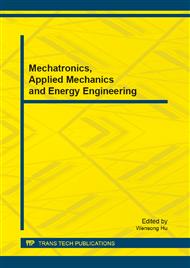p.3
p.8
p.14
p.20
p.26
p.32
p.38
p.45
Dynamic Response of Magnesium Alloy and its Nanocomposite under High Strain Rate Compressive Loading
Abstract:
Magnesium alloys due to their low density, high strength to weight ratio and good impact resistance have been increasingly used in automotive, aerospace and electronics industries. However, the poor ductility and low strength of magnesium alloys limit their usage in impact situations. The dynamic properties are critical to evaluate the materials response in impact situations. In this study, magnesium alloy AZ31B and its composite containing 1.0vol% SiC nanoparticles were subjected to quasi-static and dynamic compressive loading to investigate the influence of strain rate and the presence of nanoparticles on the mechanical behavior. The dynamic compressive behaviors of both materials have been examined over a wide range of strain rate between 700 s-1 and 2800 s-1. Compared to quasi-static loading, both materials exhibit significantly higher yield stresses and compressive strength, much better ductility, and thus a higher energy absorption capacity under dynamic compression. Under dynamic loading, the flow stress of both materials first increases with increasing strain rate from 700 s-1 to 2300 s-1 but then it decreases when the strain rate is above 2300 s-1. In terms of nanoparticle addition, its influence on the enhancement of yield stress and ultimate compressive strength are notable while the ductility remains the same resulting in better energy absorption performance of nanocomposite. This indicates that the nanocomposite has potential to replace the existing magnesium alloys for various applications where impact/shock loads are encountered.
Info:
Periodical:
Pages:
20-25
Citation:
Online since:
September 2013
Authors:
Price:
Сopyright:
© 2013 Trans Tech Publications Ltd. All Rights Reserved
Share:
Citation:


